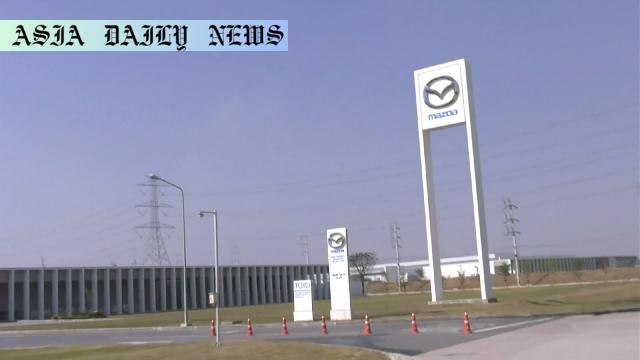Mazda announces plans to produce hybrid SUVs in Thailand through a joint $144.3 million investment with Ford by 2027.
Mazda plans to invest $144.3 million in a Thai factory by 2027.
The new line will focus on hybrid SUV production with an output of 100,000 units annually.
Mazda plans to counter competition from Chinese EVs by boosting local production and importing electric sedans.
Other Japanese automakers like Suzuki and Honda are downsizing operations in Thailand.

Mazda’s Strategic Investment to Boost Thai Production
As competitors scale back operations in Thailand, Mazda has decided to take a bold step by investing $144.3 million to enhance its production footprint in the country. This decision demonstrates strong confidence in the evolving Thai automotive market, especially during a broader transition towards electric vehicles (EVs). By 2027, Mazda is gearing up to introduce hybrid SUV production at a plant it co-operates with Ford, with a capacity to manufacture 100,000 units annually. This initiative conveys Mazda’s optimism about meeting demands within Thailand and other Southeast Asian markets, which are increasingly embracing hybrid and electric vehicles.
Strengthening Partnerships Through Innovation
Mazda’s investment is not an isolated move—it builds upon a strategic partnership with U.S. carmaker Ford. Co-operating the Thai factory allows both automakers to share resources and expertise, facilitating more efficient hybrid vehicle production. With the global automotive industry undergoing a seismic shift to green mobility solutions, Mazda aims to capture a share of the growing demand in emerging markets while maintaining operational efficiency.
Responding to Regional Automotive Trends
Thailand has traditionally been a stronghold for Japanese automakers, who previously enjoyed a 90% market share. However, the increasing appeal of Chinese EVs has caused a significant erosion of this dominance, reducing their share to the 70% range. Mazda’s plan to focus on hybrid SUVs could be its response to bridge the gap between traditional internal combustion engine vehicles and full-electric models, helping it compete successfully against the influx of competitive Chinese EVs in the region.
Comparison with Other Japanese Automakers
While Mazda is expanding and innovating, other Japanese carmakers are scaling back their operations. For instance, Suzuki plans to close a subsidiary factory by 2025, Honda intends to consolidate production, and Nissan will begin partial shutdowns in the upcoming fiscal year. Mazda’s decision to increase production contrasts sharply with these retrenchment strategies, signaling its long-term approach to market resilience and sustainability.
Focus on Electric and Sustainable Mobility
Alongside the hybrid SUV production, Mazda has plans to further bolster its presence in Thailand by importing electric sedans. This approach aligns with global trends emphasizing the importance of electrification in the automotive industry. Mazda President and CEO Moro Masahiro has emphasized the importance of catering to evolving customer preferences in Thailand as the transition to EVs gains momentum. This move also signals Mazda’s willingness to adapt and innovate in the face of changing market demands.
Outlook for Mazda and the Thai Automotive Market
Looking ahead, Mazda’s investment represents a key turning point for both the company and Thailand’s automotive industry. If successful, this project could establish Thailand as a significant production hub for hybrid SUVs in Southeast Asia. As other automakers consolidate or exit, Mazda’s strategic investment could allow it to carve out a larger market share, bridging the gap between conventional and electrified mobility solutions. It highlights the company’s commitment to sustainability and customer-centric innovation.
Commentary
A Bold but Risky Move by Mazda
Mazda’s decision to invest over $144 million in a Thai factory to produce hybrid SUVs is a bold move—one that strategically contrasts with the more cautious approaches of its Japanese counterparts. While Suzuki shutters factories and Honda consolidates operations, Mazda is betting on growth and innovation, believing in the potential of the Thai and Southeast Asian markets. This move shows the company’s determination to stay ahead in an increasingly competitive automotive landscape dominated by electric vehicles.
Adaptation Amidst Disruption
What separates this initiative from others is Mazda’s focus on hybrid solutions, addressing the immediate shift toward sustainability while bridging the gap until full EV adoption becomes more widespread in Thailand. The transition from traditional combustion engines to hybrids and eventually full EVs is a challenging one, especially when fierce competition from Chinese manufacturers is eroding Japanese automakers’ dominance. Mazda’s strategy to both produce hybrid SUVs locally and import electric sedans is thoughtful, as it covers a spectrum of customer needs.
Challenges Ahead for Mazda
That said, Mazda’s strategy isn’t without challenges. Competing with low-cost Chinese EVs won’t be easy in terms of pricing, and the success of the hybrid market in the coming years remains uncertain. Additionally, a $144 million investment may take years to yield significant returns, especially in a transitioning market like Thailand. Mazda needs to ensure it remains agile enough to adjust its plans should market dynamics or policy changes favor a more rapid shift to full EVs.
Final Thoughts
Overall, Mazda’s daring investment shines a light on its long-term vision and confidence in innovation. By taking a proactive stance, it places itself in a strong position to both compete locally and potentially lead the hybrid SUV market in Southeast Asia. While risks remain, this strategy is a testament to Mazda’s belief in the region’s potential and its ability to pivot dynamically in an industry that is undergoing rapid transformation.


